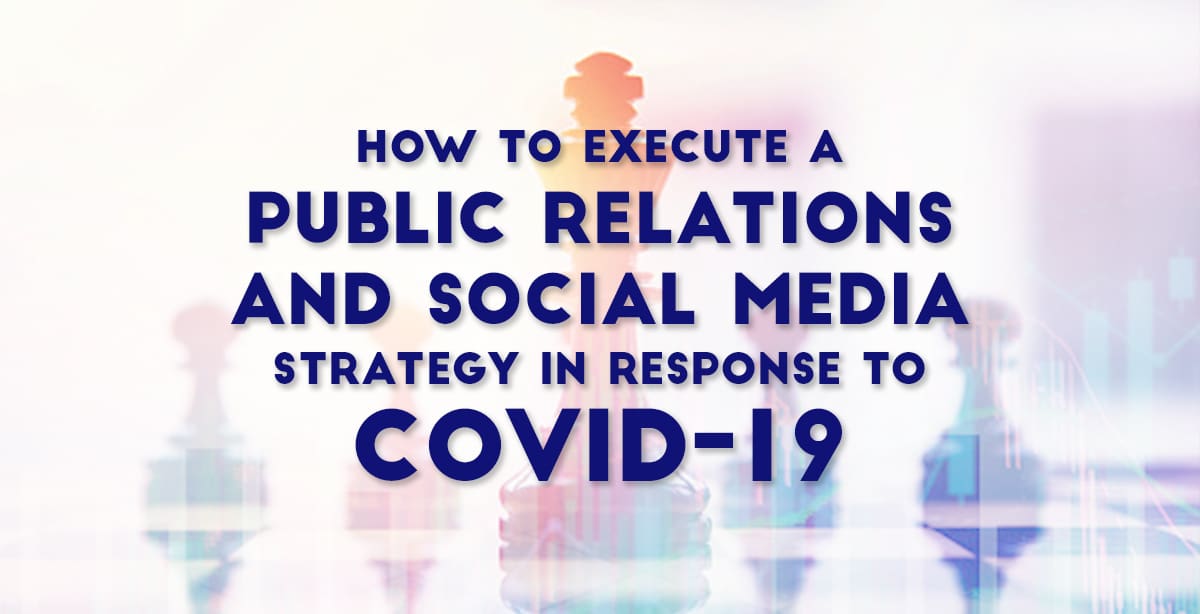
We’ve heard several repetitive phrases over the last few weeks; “Time of uncertainty,” “trying times,” “global pandemic.” These phrases roll off our tongues without hesitation due to the breadth of COVID-19. There is no precedence for this virus. No case study to reference. No prior experience that could have truly prepped any of us in our field to proactively respond to the situation in which we are currently living.
The trickle effect of this remains beyond our understanding: lost jobs, employees out of work, businesses facing bankruptcy, distribution centers unable to fill orders, limited disposable income to even purchase online. But, most importantly, there is loss of human life. That simple truth supersedes any of the former. Today is not the day to push for sales. Today is the day we hold the power to act as leaders within our industry proving that humility and humanity still exists. If we start there, we will have businesses to return to and have an audience craving to support.
“Leaders emerge during trying times.” – Jack Welch, the late CEO of GE
How Should Brands Communicate During This Crisis?
By prioritizing empathy above all. Now, more than ever, is the time for your public relations professionals and your social media managers to create cohesion. We must truly embrace the continuity of these two roles and leverage the direct-to-consumer conversation. In doing that, you are opening the door to deliver clear and transparent information to your followers while also enabling a two-way conversation. However, there are a few guidelines that need to be considered during this process – after all, we live in a time where brands and people are “canceled” online over a single misstep or act of greed in the face of tragedy.
During these times of uncertainty, it’s important to know that you are there for your consumers. If you are able to be there for them, in return, they will be there for you. Your company needs to be strategic and proactive with its communication – particularly on social media – working diligently to respond to this crisis in a way to keep your brand values intact while providing your followers with valuable information.
Here are the actions and best practices we recommend implementing in response to COVID-19 as it pertains to your social media entities:
Craft A Statement
We recommend releasing a single, descript statement to your social media fan base describing any actions being taken on behalf of the brand, how service may be affected, where to find additional resources of up-to-date information. Once you’ve crafted this message, pin it to the top of your profiles so it becomes the first source of information for your fans when they visit your brand’s page.
At this time, across many industries, changes are happening by the hour. It is advisable to create a landing page on your company’s website where up-to-date information can be added as situations evolve. That way, your pinned social media post can serve as a direct, simple source of the most recent information. People are being bombarded by the minute with conflicting messages and updates. Keep it straightforward. Here is an example of a COVID-19 landing page that we built for Farmers Telephone Cooperative that houses pertinent information regarding the virus.
What should you include in this statement?
If there are impacts on your business and its customers, be transparent and clear about the situation. Transparency is more relevant than ever today. Identify and resolve any disruption with complete clarity. For example, if order fulfillment is being impacted due to COVID-19, perhaps the statement includes “We apologize that shipping times are delayed with your purchases at this time. We are doing everything we can to fulfill your order on time while keeping you and our employees safe during this time of uncertainty.” If you are a business that takes reservations, bookings, or transactions of any kind, be sure to reiterate a contact number or preferred method of communication for customer service. For businesses with brick and mortar store fronts, do encourage customers to order online and/or provide information on paying bills online to comply with social distancing and stay-in-place ordinances.
Revise Your Messaging
Pause any social media content (organic OR paid) that is overtly self-serving, driven toward purchase or visitation, and/or insensitive to CDC mandates regarding social distancing. Content can be brand-focused, but it is important to become a resource for followers during this time – whether that be a source of up-to-date information or a mental “escape” from the daily news. Do NOT put communication out that leads the customer to believe you are looking out for your bottom line as opposed to their general well-being. For social media managers, consider implementing a fluid, weekly content calendar and posting schedule. As updates, mandates, and social responsibility is changing daily based on the unpredictable nature of this outbreak, you want to ensure that the content you are serving your fans is both timely and sensitive in nature. Not sure what that messaging looks like? Here is a list of brands that are responding to COVID-19 the right way via Forbes.
Increase Monitoring
Yes, social media aligns with the 24/7 news cycle. There is no “off” when you work in social media. Your fans have more time than ever to scroll their own social feeds, which in return will result in increased engagement, comments, questions, and concerns. In times of crisis, it is important to communicate quickly and effectively with fans and potential customers. If your brand does not have an escalation policy in place for reputation management and responses, it’s not too late to develop and implement a strategy.
To begin crafting an escalation policy, we recommend scraping your social media inboxes and comments for common inquiries – are they looking for information on shipping? Closures? Employee layoffs? Items in Stock? Take these common inquiries and work in cohesion (Social Media Manager + Marketing Director + Public Relations Director) to develop a “bank” of approved responses for more efficient outreach.
In addition, do be sure to set up notification alerts for inbound messages, comments and posts to your company’s social media pages; whether this be through a third-party social media management tool like Sprout Social or natively within each platform. These real time alerts will allow your team to be nimble in your response to concerns. This escalation policy should also include a list of key stakeholders who are to be contacted should a message/comment on social media need to be triaged to a higher authority. In all honesty, if your company has legal counsel on retainer, it isn’t an absurd thought to have them review your escalation policy, as well.
Utilize Social Listening
This, perhaps, is the most crucial piece of the crisis response puzzle. Social listening is not only a huge opportunity but a necessity during situations like this. Brands who are not taking the time to scour social media channels to gauge sentiment, human concern, insights into how this outbreak is affecting people on a personal level are those that will not have customers when the dust finally settles on this crisis.
At The Brandon Agency, we are fortunate to use Sprout Social Listening to maximize working hours by crafting search queries to gauge sentiment across all social media networks and the web at large to uncover relevant conversations and critical insights that will help drive content and brand direction.
For example, we have set up a listening queue for a travel and tourism client to see how people are communicating about travel, their plans to cancel or rebook, how they’re spending their time with closures if they’re following quarantine. The observations that uncovered insights that drove a new communication strategy that we were able to quickly deliver to our client is invaluable.
So, what did we uncover? A lot. Just take a look at this singular tweet from WFLA News in Clearwater Beach, FL on March 16, 2020 just days after executive orders from the White House mandated social distancing. Now scroll down through the replies to the tweet. Based on the conversations happening on Twitter regarding this video, we are able to observe that people, in general, are taking government ordinances seriously in this case and are even attacking those who are not complicit. This observation and subsequent insight we uncovered lead us to recommend a complete shift in online messaging for our travel and tourism clients, potentially saving them from outrage on social media.
 (Sprout Social Listening report Word Cloud exploring associations between COVID-19 and travel.)
(Sprout Social Listening report Word Cloud exploring associations between COVID-19 and travel.)
Media Relations
As much as your gut may be telling you this is not the time to pitch, that isn’t necessarily the case. In particular, if your client works in a specialized industry not experiencing a direct impact from the outbreak. It is the time to lay low on pitching that hot new resort or travel destination, however, niche publications are craving content. Excess time at home does lead to people spending more time reading news and catching up on past articles. Dive into your owned content library, bring a by-line article, dust off old press releases that didn’t get the attention you felt it deserved, and/or send out relevant pitches.
As marketers, we are used to moving a mile a minute but is a critical function of our expertise to be able to pause, take a step back, and reevaluate. Human lives are being taken at a frightening rate. People are without jobs. Now, more than ever before any of our lifetime, is the opportunity to blend businesses with humanity – to use our platforms for the greater good. Marketers, it is up to us to evaluate how to be the best resource for our clients during this time and put insight into action to drive results. If you take and implement some of the practices we discussed in the above, your company or clients will have loyal customers to come back to when the world returns to its new normal.
By subscribing to our newsletter, you agree to our Privacy Policy.




